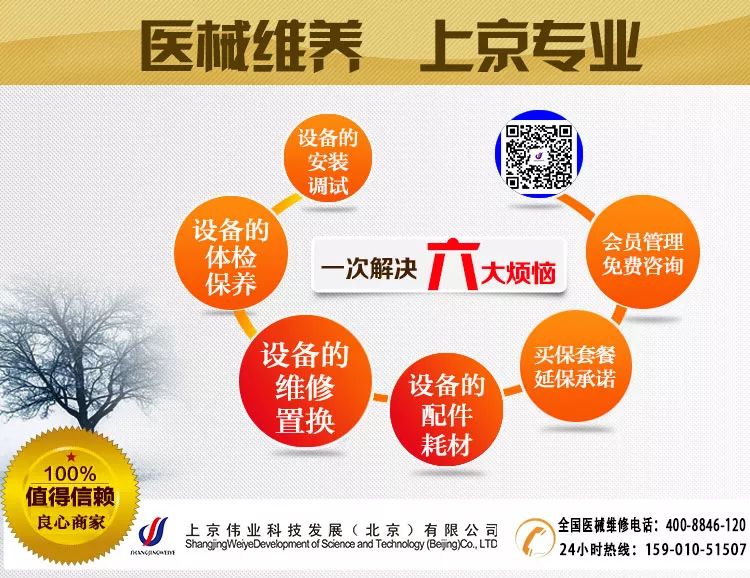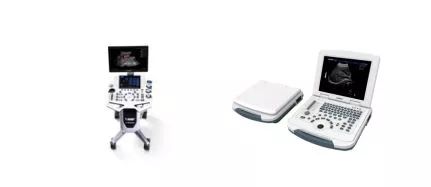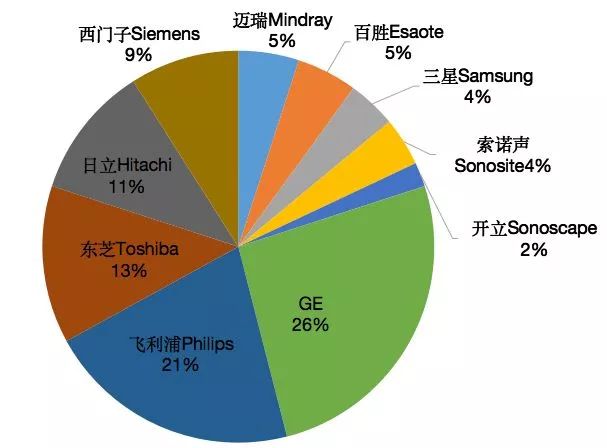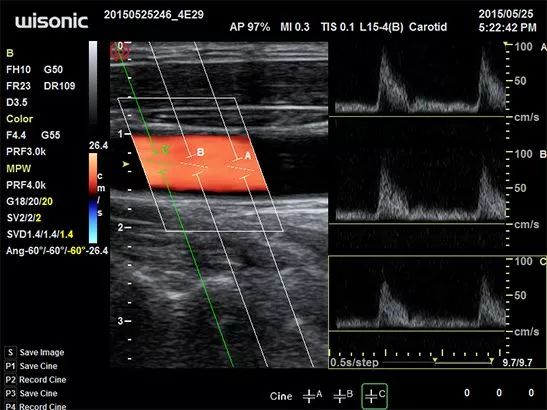
Source: Health界
The technology of ultrasonic imaging diagnosis has developed in China for about 60 years. With the continuous expansion of application fields and the constant improvement of technology, the demand for ultrasonic diagnostic equipment has maintained a good growth trend. From analog signals to digital signals, from black and white ultrasound to color ultrasound, from harmonic imaging to elastography, from manual recognition to artificial intelligence, new functions and applications are constantly expanding, and ultrasonic imaging diagnostic equipment continues to innovate and break through.
1. Basic Concepts of Ultrasonic Diagnosis Technology
Because ultrasonic diagnosis technology is a non-invasive, non-interventional, economical, practical, repeatable, and widely adaptable examination method, its application is extensive. Today, ultrasonic examination instruments have become mainstream medical imaging equipment, especially the “B-type ultrasound” system centered on ultrasonic imaging technology, which has become a commonly used medical examination method. With the continuous expansion of application fields and the constant improvement of technology, the demand for ultrasonic diagnostic equipment has maintained a good growth trend.
Ultrasonic examination technology is divided into traditional A-type ultrasound (one-dimensional ultrasound), B-type ultrasound (two-dimensional ultrasound), three-dimensional ultrasound, and four-dimensional ultrasound.
B-type ultrasound uses the physical characteristics of ultrasound waves such as reflection and refraction in human tissues. It receives signals through specific instruments to display the morphology of various tissues and organs, thereby determining the location, nature, and even the degree of functional damage of lesions. The B ultrasound we usually refer to actually refers to black and white two-dimensional B-type ultrasound, which is a plane ultrasound that only contains length and width. The images collected are black and white two-dimensional planes, and we observe the fetal tissue structure and check the placenta and amniotic fluid through these black and white photos. The full name of color ultrasound is color Doppler ultrasound, which is a high-definition B ultrasound plus color Doppler.
Three-dimensional and four-dimensional ultrasound can be simply understood as making the images clearer based on B-type ultrasound, where four-dimensional ultrasound can determine the gender.
Compared to CT, MRI, X-rays, and other detection methods, ultrasonic diagnosis has advantages such as real-time scanning (except MRI), non-invasiveness (except MRI), no radiation (except MRI), relatively low prices, mobile equipment, and flexible scanning methods.
Generally, medical ultrasound devices can be divided into black and white ultrasound devices, color ultrasound imaging devices, ultrasound endoscope devices, and portable ultrasound imaging devices. Nowadays, portable/handheld ultrasound imaging devices are increasingly favored. The portability of the equipment can greatly improve diagnostic efficiency, allowing doctors to apply it freely in both large hospitals and remote small clinics.

The left is a desktop ultrasound device, and the right is a portable ultrasound device.
2. Overview of the International Market for Ultrasonic Diagnostic Equipment
There are about 100 ultrasound manufacturers worldwide providing more than 500 different forms of ultrasound equipment. According to IHS statistics, Europe, America, and Japan are the main markets for ultrasound, accounting for a total of 70%. Advanced color ultrasound has been widely used in developed countries. The international market is mainly monopolized by international giants such as GE, Philips, Toshiba, and Hitachi, which occupy a large portion of the mid-to-high-end color ultrasound market, with European and American ultrasound occupying the high-end market and Japanese and Korean ultrasound focusing on the mid-range market.

(Data source: HIS, with Mindray and Kaili being domestic brands)
According to investigations, all the above companies have developed portable ultrasound instruments, indicating that portable ultrasonic diagnostic equipment is bound to be the future development trend of the ultrasound equipment industry. The enhancement of portability can enable the use of these devices in remote applications where reliable power sources cannot be provided, such as clinical medical services in remote villages, emergency medical services, large animal husbandry, and inspections of bridges, large machinery, and oil pipelines.
In fact, for decades, two-dimensional ultrasound has been the primary method of ultrasonic examination, and the development of basic technology in ultrasound has almost stagnated; however, in recent years, due to the emergence of new methods and new concepts, there have been breakthroughs in the practical technology of ultrasound, with artificial intelligence becoming a key research direction for foreign ultrasound companies, and the integration of the Internet and telemedicine may lead the ultrasound industry to break into new fields.
3. Overview of the Domestic Market for Ultrasonic Diagnostic Equipment
Domestic ultrasound has mainly experienced three important stages: the first stage is the black and white ultrasound era (1960s); the second stage is the color ultrasound era (1980s); the third stage is the functional diagnosis era, which is the current stage of ultrasound development.

(Data source: Medical Equipment Home)
The main consumer group of the domestic ultrasound market is major hospitals and medical institutions. Tertiary hospitals, due to their ample funding, have always been the main target for imported ultrasound brands. In recent years, domestic ultrasound imaging manufacturers have emerged, gradually occupying the main market of domestic hospitals due to their cost-effectiveness. Excellent domestic brands such as Mindray and Kaili have launched mid-to-high-end ultrasound devices that are competitive in the mid-range market. Last year, overall, the installation volume of domestic ultrasound showed an upward trend, with exports of color ultrasound increasing by about 5% year-on-year.
In addition to significant technological advancements, the development and application promotion of domestic ultrasound equipment have achieved remarkable results thanks to national policy support. Medical imaging equipment has been listed as a key supported project in the “13th Five-Year Plan for Health and Health Technology Innovation” (jointly issued by multiple ministries), the Ministry of Science and Technology’s “13th Five-Year Plan for Medical Device Technology Innovation”, and the National Development and Reform Commission’s “Three-Year Action Plan to Enhance the Core Competitiveness of Manufacturing” (2018-2020); the National Health and Family Planning Commission issued the “Basic Standards and Recommended Standards for County Hospital Medical Service Capacity” in May 2016, requiring county-level hospitals to be equipped with CT, MRI, DSA, various types of DR equipment, and ultrasound imaging equipment; from 2016 to 2017, “Digital Diagnosis and Treatment Equipment R&D” became a national key R&D plan.
Therefore, under the favorable policy situation, domestic ultrasound companies have risen one after another. Last year, Shenzhen Mindray acquired the American Zonare company, and the Italian company Esaote was also acquired by another Chinese company. In addition, well-known companies include Shenzhen Kaili, Shantou Ultrasound, Shenyang Neusoft, Shenzhen Lanyun, Shenzhen Weierde, etc., most of which have begun to occupy the portable ultrasound instrument market.

The picture shows the clinical image of the “Clover” portable color ultrasound from Shenzhen Huasheng Medical.
Surveys have found that among the well-known ultrasound companies in China, those based in Shenzhen account for the vast majority. Most of these companies were established early, so the ultrasound products they developed are mostly first in the country. Some companies (Lanyun) have moved from Guangzhou to Shenzhen, attracted by the rich ultrasound resources in Shenzhen, and some companies (Weierde) started as OEM (Original Equipment Manufacturer).
In subsequent research on local ultrasound manufacturers in Shenzhen, aside from influential brand manufacturers, we found that there are many small ultrasound equipment manufacturers widely distributed in Longgang, Pingshan, Baoan, and other areas. Due to scale limitations, these small ultrasound equipment manufacturers mostly produce medical consumables or related components needed for ultrasound equipment or provide equipment maintenance services, many of which have related cooperation with well-known domestic and foreign ultrasound brands (not disclosed), mostly through OEM (designated production). In addition to this model, those capable of manufacturing complete machines or possessing independent R&D technology (ODM – Original Design Manufacturer) will choose to cooperate with local (or second and third-tier cities) medical institutions.
At the same time, we also found that some manufacturers, such as Shenzhen Anke (established in 1986), face difficulties in sales, as they have a dedicated section on their official website seeking agents and distributors.
4. Future Trends of Ultrasonic Diagnostic Equipment
With the rise of domestic ultrasound devices, the gap with advanced foreign equipment is constantly narrowing. The procurement volume of domestic color ultrasound by top-tier hospitals is increasing year by year. Currently, medical institutions below the second-tier hospitals are generally no longer equipped with imported color ultrasound instruments. The clinical application of ultrasound equipment will present the following development trends:
Multi-purpose full-body machines may be gradually replaced. Since various specialized ultrasound instruments differ in probe size, shape, frequency, and operation methods, full-body color ultrasound will develop towards specialized color ultrasound.
Application extension. The development of ultrasonic medical technology is endless, such as elastography, ultrasound-enhanced imaging, navigation fusion, etc. These new technologies are highly integrative, and the integrated application centered on ultrasound intervention brings revolutionary changes to ultrasound medicine, broadening the application prospects of medical ultrasound equipment.
Integration with artificial intelligence. Due to the lack of standardized ultrasound image acquisition, image quality control, and transmission standards in ultrasound medical examinations, it is currently difficult to achieve large-scale remote reading of ultrasound medical diagnoses. Therefore, equipping ultrasound devices with artificial intelligence to assist grassroots doctors in real-time diagnostic issues is an effective solution to alleviate the uneven levels and shortages of grassroots medical experts and promote hierarchical diagnosis and treatment.
Portable/handheld ultrasound will be widely used. As mentioned earlier, portable ultrasound is increasingly needed and recognized by medical institutions due to its portability, low power consumption, high performance, and ease of operation. Especially in China, where medical resources are unevenly distributed, grassroots hospitals and township health centers find it difficult to purchase large ultrasound equipment, while portable ultrasound will be a cost-effective and widely applicable alternative.
New technologies are continuously developing, and each technological shift brings opportunities for rapid advancement. Overall, the market development of ultrasound instruments will focus on multifunctional color ultrasound, with an increasing demand for portable color ultrasound and handheld color ultrasound. The domestic market demand is still being released, and future demand will continue to grow. Although domestic equipment has replaced imports, there is still considerable expansion space in the mid-to-high-end market, which may be a direction for the future expansion of domestic brands.
